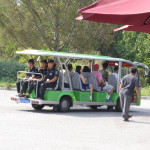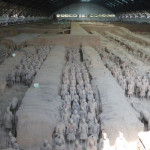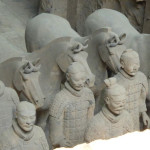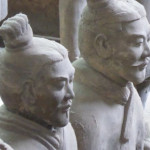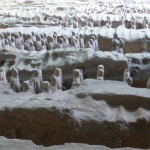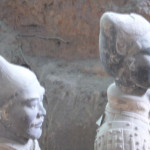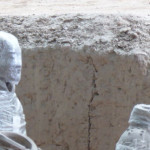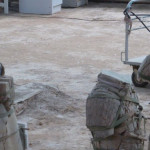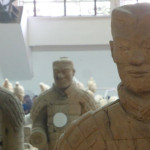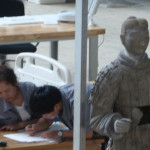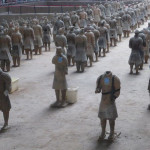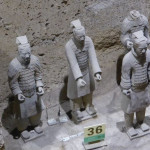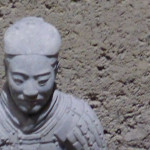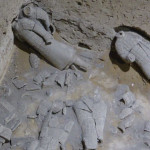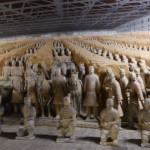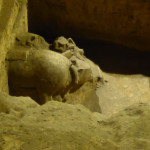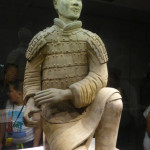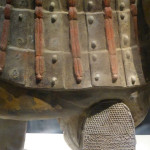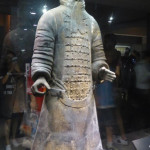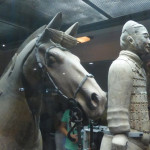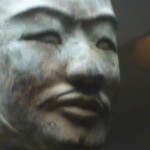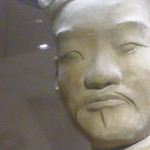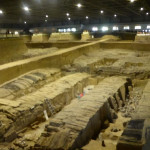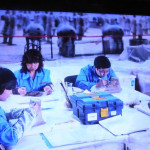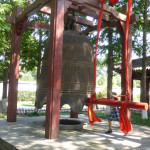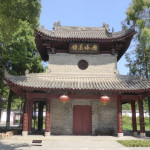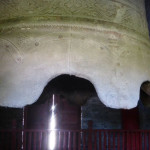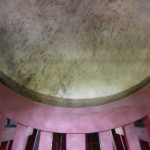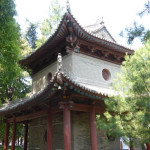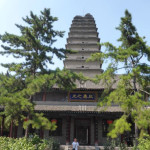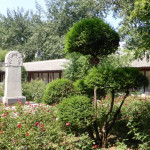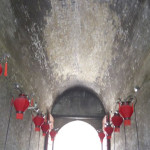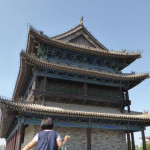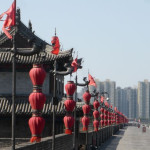Thursday 3rd August 2017
Today we have an organised tour through Travel Guide China. We will be visiting the Terracotta Warriors and Horses Museum, Small Wild Goose Pagoda and Xi’an Museum and City Wall – West Gate. It will be a big day and the forecast temperature is for 39°C. Ouch!!
We were collected from the hotel at 8.25am and we joined 4 Spanish, 3 Dutch Indians and 2 Canadians. A nice small group. We drove to the Terracotta Warriors which was about an hour away. Whilst driving their our guide Lily gave us a little information about the tour and also some things about modern day China. This was all very interesting.
Some interesting information about China
• Government owns all land, they can decide to demolish your apartment building and you have to move. They are replacing smaller apartment buildings with taller buildings but the average floor space is then smaller.
• 1949 – Under Chairman Mao, all land now owned by the Government, rich Chinese lost their land.
• Drivers just go where they want if there is room, to enable this speed limit in city is 40kmh. No anger as this is just the way it is.
• Children have to learn over five thousand words at school. They recite, write, recite, write. Starting from kindergarten.
Terracotta Warriors
The Terracotta Army was discovered on 29 March 1974 by farmers digging a water well approximately 1.5 km east of the Qin Emperor’s tomb mound at Mount Li. This discovery prompted Chinese archaeologists to investigate, revealing the largest pottery figurine group ever found in China.
A museum complex has since been constructed over the area, with the largest pit enclosed within with a large structure. The farmers had to move as the Government owns the land.
We visited Pits 1, 2 and 3.
Pit one, which is 230 m x 62 m, contains the main army of more than 6,000 figures. There were archaeologists working their as a display of what they do, but away from the site there is about 5000 archaeologists working to restore the warriors.
Pit two has cavalry and infantry units as well as war chariots and is thought to represent a military guard.
Pit three is the command post, with high-ranking officers and a war chariot.
The terracotta figures are life-sized (about 2 metres tall). They vary in height, uniform, and hairstyle in accordance with rank. The faces appear different for each individual figure, scholars however have identified 10 basic face shapes. The figures are of these general types: armoured warriors; unarmored infantrymen; cavalrymen who wear a pillbox hat; helmeted driver of chariots with more armour protection; spear-carrying charioteers; kneeling archers who are armoured; standing archers who are not; as well as generals and other lower-ranking officers.
It was very interesting and quite spectacular. The jigsaw puzzle task of putting the warriors together is incredible.
We then went to the Small Wild Goose Pagoda, built between 707–709, during the Tang dynasty under Emperor Zhongzong of Tang. The pagoda stood 45 m, In 1556 an earthquake shook the pagoda and damaged it so that it now stands at a height of 43 m with fifteen levels of tiers. It was a Buddhist Temple. We saw the Bell Tower and Drum Tower in the precinct of the Pagoda.
We then went to the West Gate – City Wall. An amazing structure that surrounds the city. It is one of the oldest, largest and best preserved Chinese city walls. It was built as a military defense system. The wall encloses an area of about 14 square kilometres. It is a rectangle shape 5km x 3km. Guard towers every 120m with a North, South, East and West Gate.
From the City Wall, the tour was meant to go to the Drum and Bell Tower and Muslim Bazaar but as the day was so hot and we had been there yesterday, we decided to return to the hotel for a well earned rest.
It was a very big day and the extreme heat made it exhausting.
- Golf cart to the entrance of the Terracotta Warriors
- Pit 1 – the Terracotta Warriors, 2000 warriors
- Pit 1 – the Terracotta Warriors
- Pit 1 – the Terracotta Warriors
- Pit 1 – the Terracotta Warriors
- Works in progress – Pit 1 – the Terracotta Warriors
- Pit 1 – the Terracotta Warriors
- Pit 1 – the Terracotta WarriorsPit 1 – the Terracotta Warriors
- Pit 1 – the Terracotta Warriors
- Pit 1 – the Terracotta Warriors
- Pit 1 – the Terracotta Warriors
- Still to be sorted – Pit 1 – the Terracotta Warriors
- paid photo opportunity with the Terracotta Warriors
- Horse still to be dug out
- Kneeling Archer
- Kneling Archer – still has original colour
- The General
- Infantryman
- Face of the infantryman
- Standing Archer
- Pit 2
- 5000 Achaeolists at work on the Terracotta Warriors
- Small Wild Good Pagoda – Bell Tower
- Small Wild Good Pagoda – Bell Tower
- Small Wild Good Pagoda – Bell Tower
- Small Wild Good Pagoda – Drum Tower
- Small Wild Good Pagoda – Drum Tower
- Small Wild Good Pagoda
- Garden in Small Wild Good Pagoda
- Tunnel under West Gate of City Wall
- Small Wild Good Pagoda – Admin Building
- Guard Tower at 120m intervals around the 16km of the city wall for defence of the city
